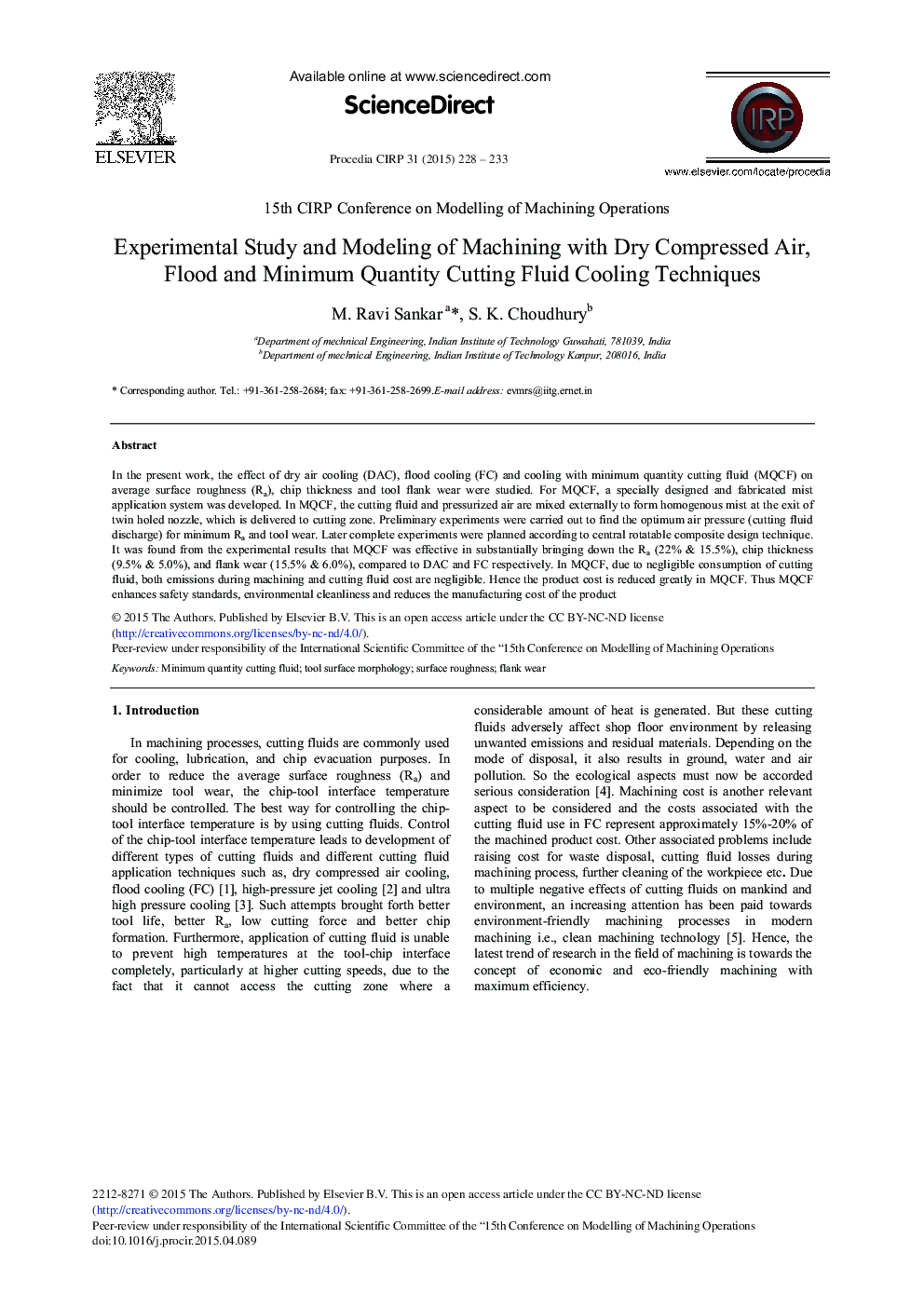| Article ID | Journal | Published Year | Pages | File Type |
|---|---|---|---|---|
| 1699640 | Procedia CIRP | 2015 | 6 Pages |
In the present work, the effect of dry air cooling (DAC), flood cooling (FC) and cooling with minimum quantity cutting fluid (MQCF) on average surface roughness (Ra), chip thickness and tool flank wear were studied. For MQCF, a specially designed and fabricated mist application system was developed. In MQCF, the cutting fluid and pressurized air are mixed externally to form homogenous mist at the exit of twin holed nozzle, which is delivered to cutting zone. Preliminary experiments were carried out to find the optimum air pressure (cutting fluid discharge) for minimum Ra and tool wear. Later complete experiments were planned according to central rotatable composite design technique. It was found from the experimental results that MQCF was effective in substantially bringing down the Ra (22% & 15.5%), chip thickness (9.5% & 5.0%), and flank wear (15.5% & 6.0%), compared to DAC and FC respectively. In MQCF, due to negligible consumption of cutting fluid, both emissions during machining and cutting fluid cost are negligible. Hence the product cost is reduced greatly in MQCF. Thus MQCF enhances safety standards, environmental cleanliness and reduces the manufacturing cost of the product
